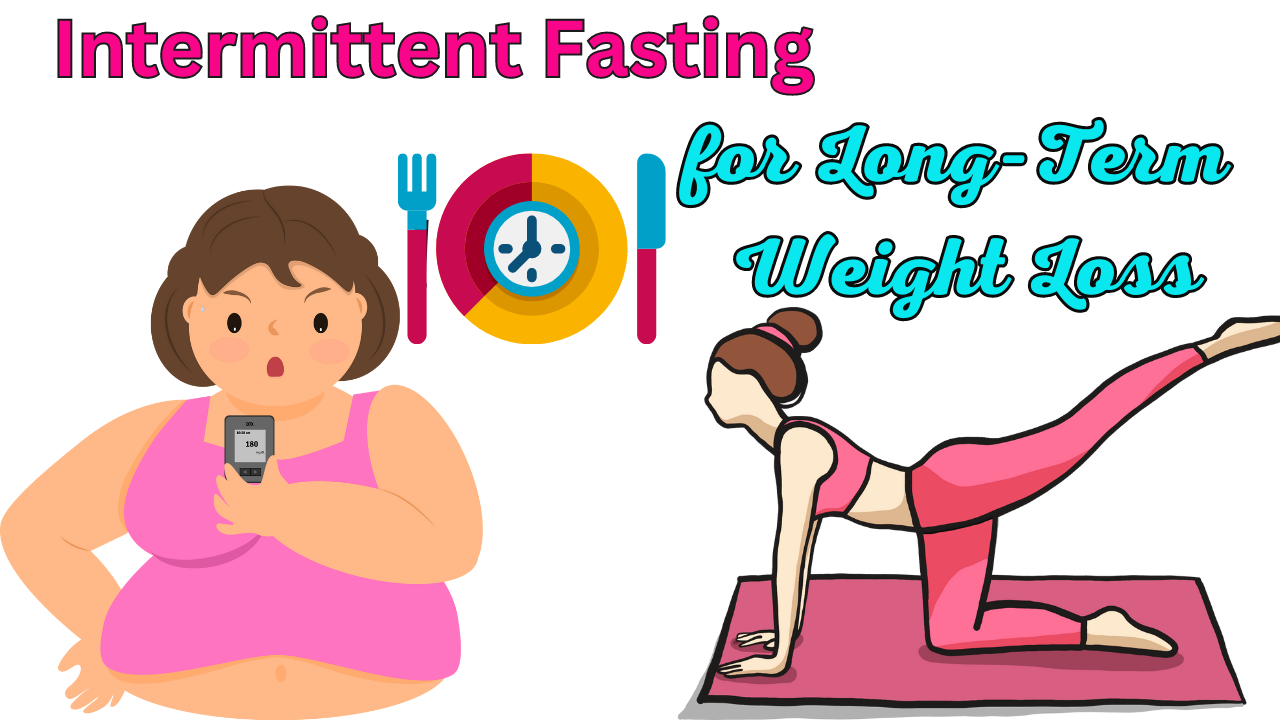
The prevalence of obesity has reached epidemic proportions worldwide, leading to an urgent need for effective weight loss strategies. One promising approach that has gained attention in recent years is alternate-day fasting (ADF). ADF involves alternating between days of unrestricted eating and days of significant calorie restriction. This dietary intervention has been shown to have metabolic effects that contribute to weight loss in obese women. In this article, we will explore the research findings on the metabolic effects of ADF in obese women and its effectiveness in promoting weight loss.
Understanding Alternate-Day Fasting (ADF)
Alternate-day fasting is a dietary regimen that involves fasting every other day while allowing unrestricted eating on non-fasting days. This approach differs from continuous calorie restriction (CR), where individuals must limit their food intake every day. Many obese individuals find it challenging to sustain CR due to the need for constant food restriction. ADF offers a more flexible approach, allowing individuals to self-select their food choices while still achieving their energy goals with the guidance of a dietitian.
The Impact of ADF on Weight Loss
Several studies have examined the effects of ADF on weight loss in obese individuals, including women. One study found that after six weeks of ADF, obese women experienced a mean weight loss of 7.1% from baseline. This percentage is comparable to the weight loss observed in other ADF trials, which ranged from 4-5.6% over similar time frames. These findings suggest that ADF may be a viable alternative to continuous calorie restriction for short-term weight loss in obese women.
ADF and Visceral Fat Reduction
Visceral obesity, characterized by an increased intra-abdominal fat area, is associated with a higher risk of chronic diseases such as coronary heart disease and type 2 diabetes. ADF has been shown to effectively reduce visceral fat mass, offering a potential protective role against these diseases. In one study, waist circumference, a measure of visceral fat mass, decreased by 5.7% from baseline after six weeks of ADF. Other studies have reported reductions in visceral fat mass ranging from 4-10% in response to ADF. These results demonstrate the positive association between body weight loss and the reduction of visceral fat mass through ADF.
Body Composition Changes with ADF
In addition to weight loss and visceral fat reduction, ADF has been shown to impact body composition in obese women. One study assessed body fat mass using a tetra-polar bioelectrical impedance analyzer and found a decrease in fat mass from baseline after eight weeks of ADF. Other studies utilizing dual-energy X-ray absorptiometry reported similar findings, with reductions in body fat mass observed alongside weight loss. These results highlight the potential of ADF to influence body composition positively in obese women.
Blood Pressure and Glucose Regulation
Cardiovascular health is a crucial aspect to consider when evaluating the metabolic effects of dietary interventions. ADF has been investigated for its impact on blood pressure and glucose regulation. In one study, systolic and diastolic blood pressure decreased by 9.7% and 8.3% respectively after six weeks of ADF. However, the effects of ADF on fasting glucose and insulin concentrations seem to vary in different studies. Some studies reported significant reductions in fasting glucose following ADF, while others found no significant changes. These mixed findings indicate the need for further research to understand the effects of ADF on glucose regulation fully.
Lipid Profile and ADF
Another aspect of metabolic health affected by ADF is lipid profile. Studies have examined the effects of ADF on total cholesterol, LDL cholesterol, HDL cholesterol, and triglyceride concentrations. The results have been inconclusive, with some studies reporting reductions in total cholesterol, LDL cholesterol, and triglycerides, while others found no significant changes. HDL cholesterol, often considered the “good” cholesterol, has shown mixed results as well. It is important to note that exercise training has been shown to have a more consistent positive effect on HDL cholesterol levels. Therefore, future studies could explore the combined effects of ADF and exercise on lipid profile.
Limitations and Future Directions
Despite the promising findings on the metabolic effects of ADF in obese women, several limitations should be acknowledged. Many of the studies conducted on ADF had a small sample size, short duration, and lacked control groups. Additionally, there appear to be sex-specific differences in the response to ADF, suggesting the need for further investigation. Future research should involve larger randomized controlled trials with longer durations to provide more robust evidence on the metabolic effects of ADF.
Conclusion
Alternate-day fasting has emerged as a promising dietary intervention for weight loss in obese women. The metabolic effects of ADF, including weight loss, visceral fat reduction, and potential improvements in blood pressure and glucose regulation, offer significant benefits for individuals seeking to improve their overall health. However, more research is needed to fully understand the long-term effectiveness and potential synergies of combining ADF with exercise. With further investigation, ADF may become a valuable tool in the management of obesity and related metabolic disorders.
Additional Information: Alternate-day fasting may not be suitable for everyone, and it is essential to consult with a healthcare professional or registered dietitian before starting any fasting regimen. Pregnant or breastfeeding women, individuals with certain medical conditions, and those taking medications should exercise caution and seek personalized guidance. ADF should be approached as part of an overall healthy lifestyle that includes regular physical activity and a balanced diet.
References:
- Chaston TB, Dixon JB: Factors associated with percent change in visceral versus subcutaneous abdominal fat during weight loss: findings from a systematic review. Int J Obes (Lond) 2008, 32: 619–628.
- Varady KA, Hellerstein MK: Alternate-day fasting and chronic disease prevention: a review of human and animal trials. Am J Clin Nutr 2007, 86: 7–13.
- Malik VS, Hu FB: Popular weight-loss diets: from evidence to practice. Nat Clin Pract Cardiovasc Med 2007, 4: 34–41.
- Varady KA, Bhutani S, Church EC, Klempel MC: Short-term modified alternate-day fasting: a novel dietary strategy for weight loss and cardioprotection in obese adults. Am J Clin Nutr 2009, 90(5): 1138–1143.
- Eshghinia S, Gapparov GM: Effect of short-term modified alternate-day fasting on the lipid metabolism in obese women. Iranian J Diabetes and Obesity 2011, 3(1): 1–5.
- Das SK, Gilhooly CH, Golden JK, Pittas AG, Fuss PJ, Cheatham RA, et al.: Long-term effects of 2 energy-restricted diets differing in glycemic load on dietary adherence, body composition, and metabolism in CALERIE: a 1-y randomized controlled trial. Am J Clin Nutr 2007, 85: 1023–1030.
- Johnson JB, Summer W, Cutler RG, Martin B, Hyun DH, Dixit VD, Pearson M, et al.: Alternate day calorie restriction improves clinical findings and reduces markers of oxidative stress and inflammation in overweight adults with moderate asthma. Free Radic Biol Med 2007, 42: 665–674.
- Heilbronn LK, Smith SR, Martin CK, Anton SD, Ravussin E: Alternate-day fasting in nonobese subjects: effects on body weight, body composition, and energy metabolism. Am J Clin Nutr 2005, 81: 69–73.
- Halberg N, Henriksen M, Soderhamn N, Stallknecht B, Ploug T, Schjerling P, et al.: Effect of intermittent fasting and refeeding on insulin action in healthy men. J Appl Physiol 2005, 99: 2128–2136.
- Trepanowski JF, Canale RE, Marshall KE, Kabir MM, Bloomer RJ: Impact of caloric and dietary restriction regimens on markers of health and longevity in humans and animals: a summary of available findings. Nutrition Journal 2011, 10: 107.
- Ellison RC, Zhang Y, Qureshi MM, Knox S, Arnett DK, Province MA: Lifestyle determinants of high-density lipoprotein cholesterol: the National Heart, Lung, and Blood Institute Family Heart Study. Am Heart J 2004, 147: 529–535.





Leave a Reply